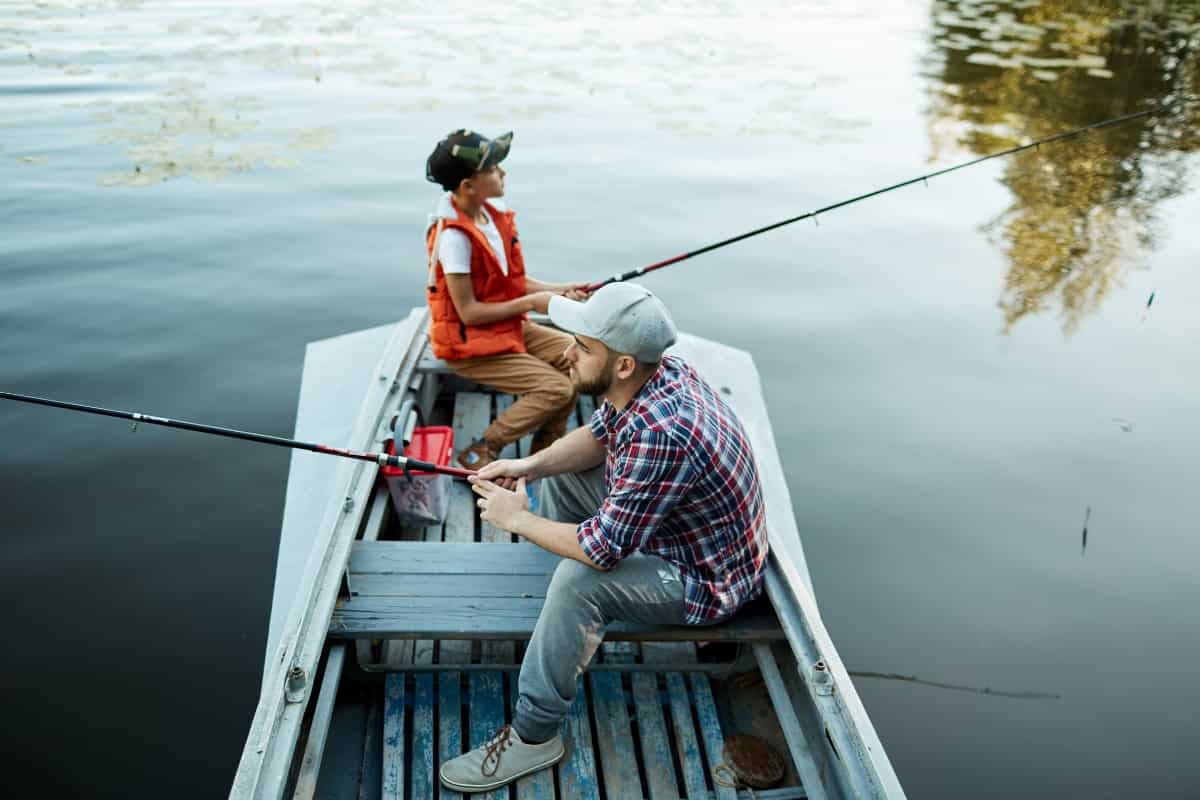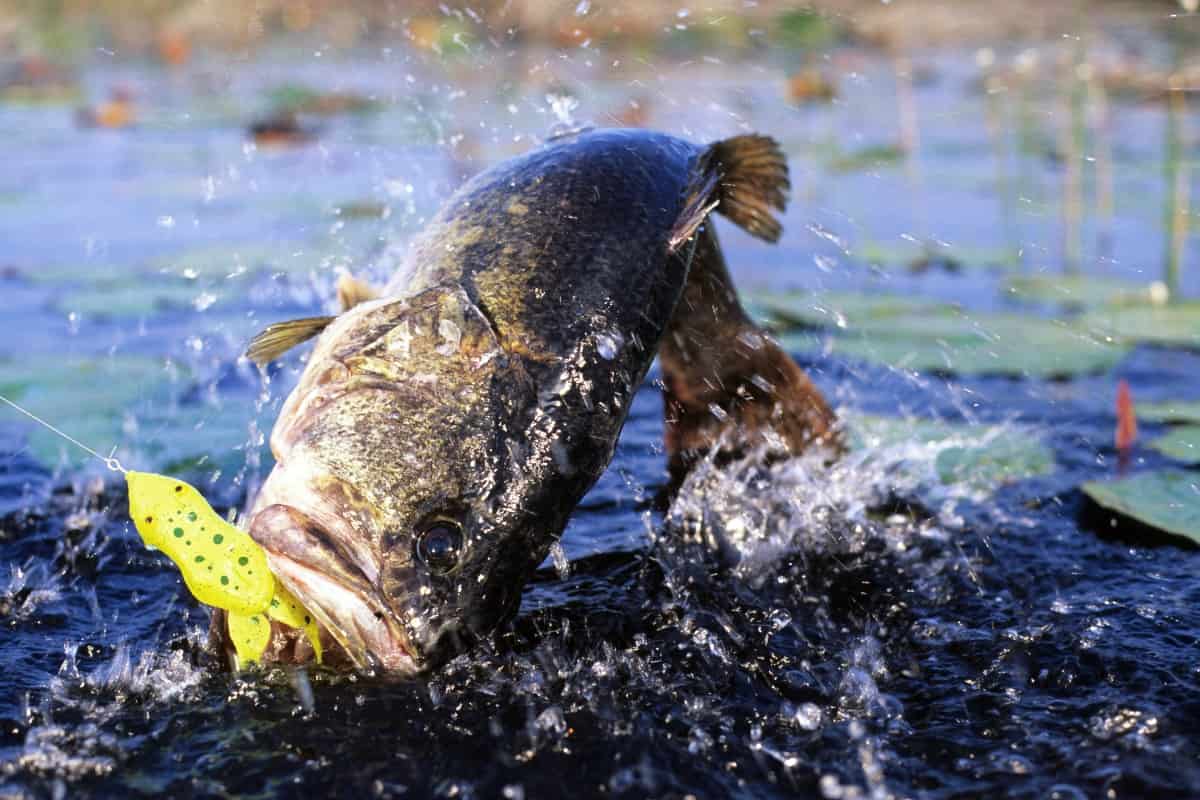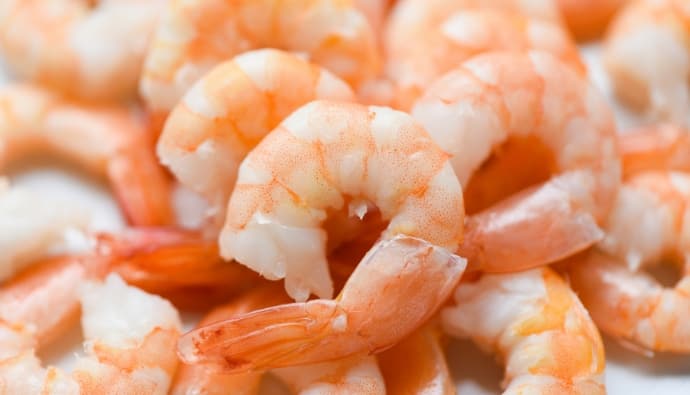You can catch calico bass by drifting, trolling, and still-fishing from anchored boats or kayaks. Since this bass is a light tackle fish, you can find it along breakwaters in bars and kelp beds. Use different baits, such as sardines, anchovies, mackerel squid, and queenfish to attract them. Artificial lures you can use include streamer flies and a metal jig with a whole squid. As for the fishing gear, use a 7-foot medium heavy rod and a size 300 baitcasting reel. Additionally, you should use a 50 to 65-pound Spectra braided fishing line and 9-inch Big Hammer swimbait lures on a hook. Ideally, use a medium-speed reel to retrieve your lure.
Every year, anglers gather in Southern California to catch Calico Bass, a popular sportfish. These species are strong and aggressive, and catching one can be quite hectic. Knowing how to catch these powerful fighters is important. To make your work easier, we have compiled the most important equipment and the techniques you should use to retrieve them.
Listen to this post on the Cast & Spear Podcast
Overview
The kelp bass is a mainstay for party boat trips and a joy to fight on the water. It can be found in along the central and southern California coast as well as northeastern Baja.
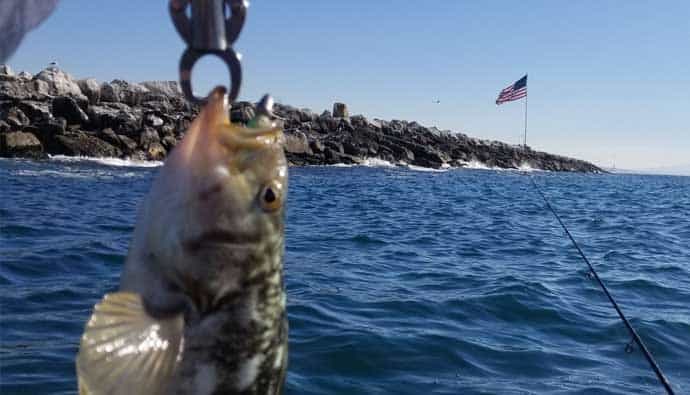
Calico Bass Facts
The calico bass is not only a powerful fighter, it is also an excellent food fish because of the unique taste and texture of its flesh.
It’s a hardy fish which is apparent with its characteristic compressed and elongated shape. It has a notch between its spiny and dorsal fins with the longest spines in the first dorsal fins.
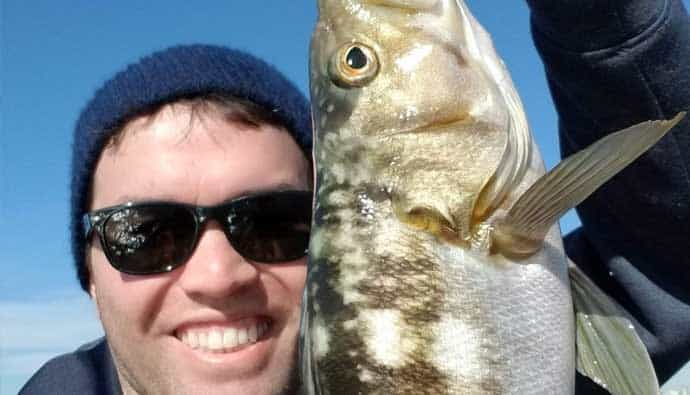
The calico bass can either be brown or olive green in color and has pale blotches on the back with a lighter belly. The kelp bass is distinguishable from the sand variety by their spines – sand bass has a third dorsal spine that is much longer than the fourth and fifth ones.
This fish can take 5 to 6 years to reach 12 inches in length, which is also the time when they can spawn. Due to its popularity as a sportfish, the calico bass is in danger of being overfished. Also, since they are such slow growers, when you do catch a big one, it’s best to release it to keep the population from falling.
| Scientific Name: | Paralabrax clathratus |
| Common Name(s): | Calico Bass, Kelp Bass, Saltwater Bass, Cabrilla, Bull Bass, Kelp Salmon |
| Family: | Serranidae |
| Characteristics | Brown or olive green in color with spiny dorsal fins. |
| Depth Range | 2.4 – 61 meters |
| Locations | Calico bass remains a loner but joins together to pray on schools of fish. It can be found around water-based structures such as shipwrecks and pilings. |
| Catch & Size Limits | 5 fish per bag (at least 14 inches) |
How to Catch Calico Bass
Saltwater bass is a light tackle fish that can be caught from breakwaters in bars, and they can also be found in kelp beds. The most popular methods to catch them include drifting, trolling, and still-fishing from anchored boats or fishing kayaks.
You also have a variety of choices when it comes to bait. The cabrilla’s main diet is other smaller fish, so you can use sardines, anchovies, mackerel squid, and queenfish to lure them.
If you don’t want to get your hands dirty on the other hand, you can always use artificial lures such as streamer flies and a metal jig that has a whole squid on it. Chumming the waters and baiting are considered to be the best combination to catch several calicos at a time.
When it comes to the rod, faster ones work best. Use a 7 to the 8-foot saltwater rod with a saltwater baitcasting reel or spinning reel. Since you’ll be catching these fish in the kelp forests, it’s important to use braided fishing line so you can cut through the kelp if the fish gets tangled.
Additionally, a fluorocarbon leader can also be useful if the fish refuses to bite straight braid. Use this mainly when fishing for kelp bass away from the kelp, such as rocky structures.
Bull Bass Fishing Tactics
- Always go with the biggest soft bait lure you have (yup, use that 9-inch swimbait) at the start of your fishing day. Go after the most aggressive fish first!
- If the bite gets a bit slow, then drop your swimbait down to 4 or 5 inches.
Cabrilla Fishing Tips
- If you are fishing for large calico, use mackerel as bait or brown baits such as croaker or perch, or monster swimbaits.
- When a calico takes the bait don’t set the hook, just start reeling in quickly.
- When fishing in the kelp, use brown and red swimbaits. When fishing in the open waters use green, blues, and whites.
- Use the lightest jighead you can on the swimbait and fish the different water levels until you find where the fish are at.
- Use a medium-speed reel retrieve with your swimbait.
Calico Sea Bass Fishing Lures and Gear
- 7-foot medium heavy rod
- Size 300 baitcaster reel
- 50 to 65-pound Spectra braided fishing line – Heavier line for bigger swimbaits
- 9-inch Big Hammer swimbait lures or bait on a hook.
When to Catch Calicos
Calico can be fished year-round in fisheries off Los Angeles, Orange County, and San Diego. For the most action, you should fish in the warmer months (between May and October), but you can also score big between November and April.
This bass species can also be caught during overnight fishing expeditions around islands such as the Catalina and San Clemente islands.
Spearfishing Kelp Bass
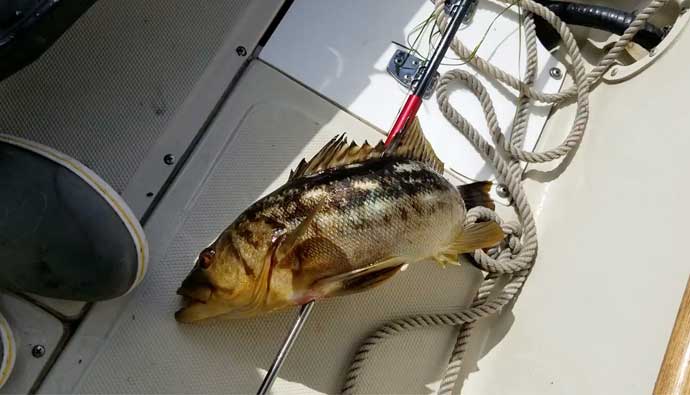
Spearfishing for Calicos is fun, but the challenge is finding the larger ones. The bigger ones are smart and tend to know when you’re targeting them.
I always get a kick out of going for them because they tend to try and bully you, enticing you to take the shot. Especially the smaller ones will come right at you and stare you down.
If you’re not seeing them on your dive, make sure you look around the rocks and in crevices. However, most times you will see them along the kelp or structures.
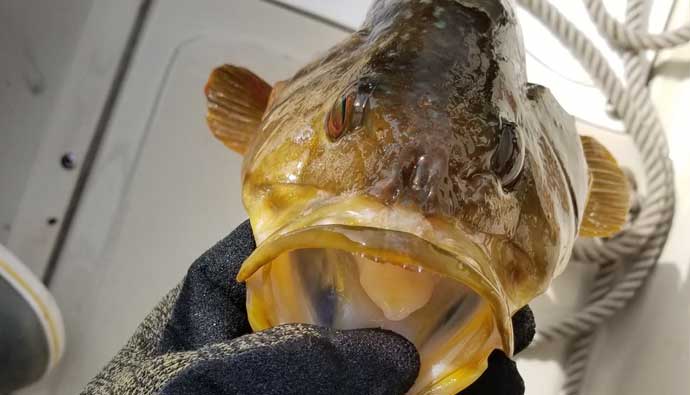
How to Clean Calico Bass
- Make a small and shallow incision along the base of the tail fin on the belly of the calico. Cut the belly open right down to the lower jaw.
- Pull out all of the guts from the cavity you made until it is empty, and wash the fish inside and out with water.
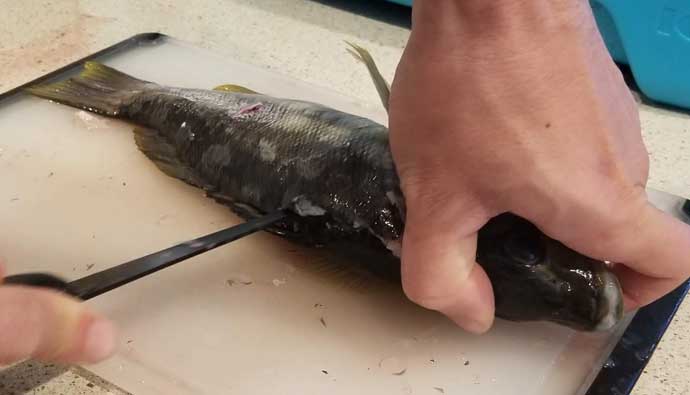
- Hold a sharp knife against the skin of the fish and scrape it from head to tail to remove the scales on both sides.
- Make an incision behind the gill plate from the spine right up to the belly.
- Hold the knife against the spin and make sure that it faces the tail.
- Slice at a downward angle into the belly and push the knife along the spine till you reach the tail. Remove the fillet when you are done.
- Turn the fish on the other side and repeat to remove the other fillet.
- To remove the skin, slide the knife between the meat and the skin and pull on it while sliding the knife down the fillet. Discard the skin when it pulls free.
Calico Bass Recipe
- Heat a non-stick skillet over medium heat.
- Make a mixture of 1 tablespoon of all-purpose flour and salt and pepper (to taste) in a Ziploc bag that can accommodate the fillets.
- Mix 1 tablespoon of water and egg white in a dish and stir while whisking.
- Make a mixture of a ¼ cup of seasoned breadcrumbs and 2 tablespoons of cornmeal in another dish and stir with a whisk.
- Place one fillet in the Ziploc bag and shake to coat. Dip it in the egg white mixture and then in the breadcrumb mixture. Make sure to coat both sides equally. Repeat with the other fillet.
- Add some oil and butter to the heated skillet and cook till the butter melts.
- Add the fillets to the pan and cook for 5 minutes on each side or till the fish starts to flake when you test it with a fork.
- Serve with lemon wedges.
Frequently Asked Questions
Calico bass has large teeth and mouths that can injure you if you are not careful. Wrap your thumb with a Band-Aid or thick tape, so your thumb doesn’t get sliced when you lift it from the mouth. Make sure that the sharp spines at the backstay well away from you as well.
The bass can be found near submerged rocky structures such as shipwrecks, piers, pilings, etc.




 Facebook
Facebook YouTube
YouTube


